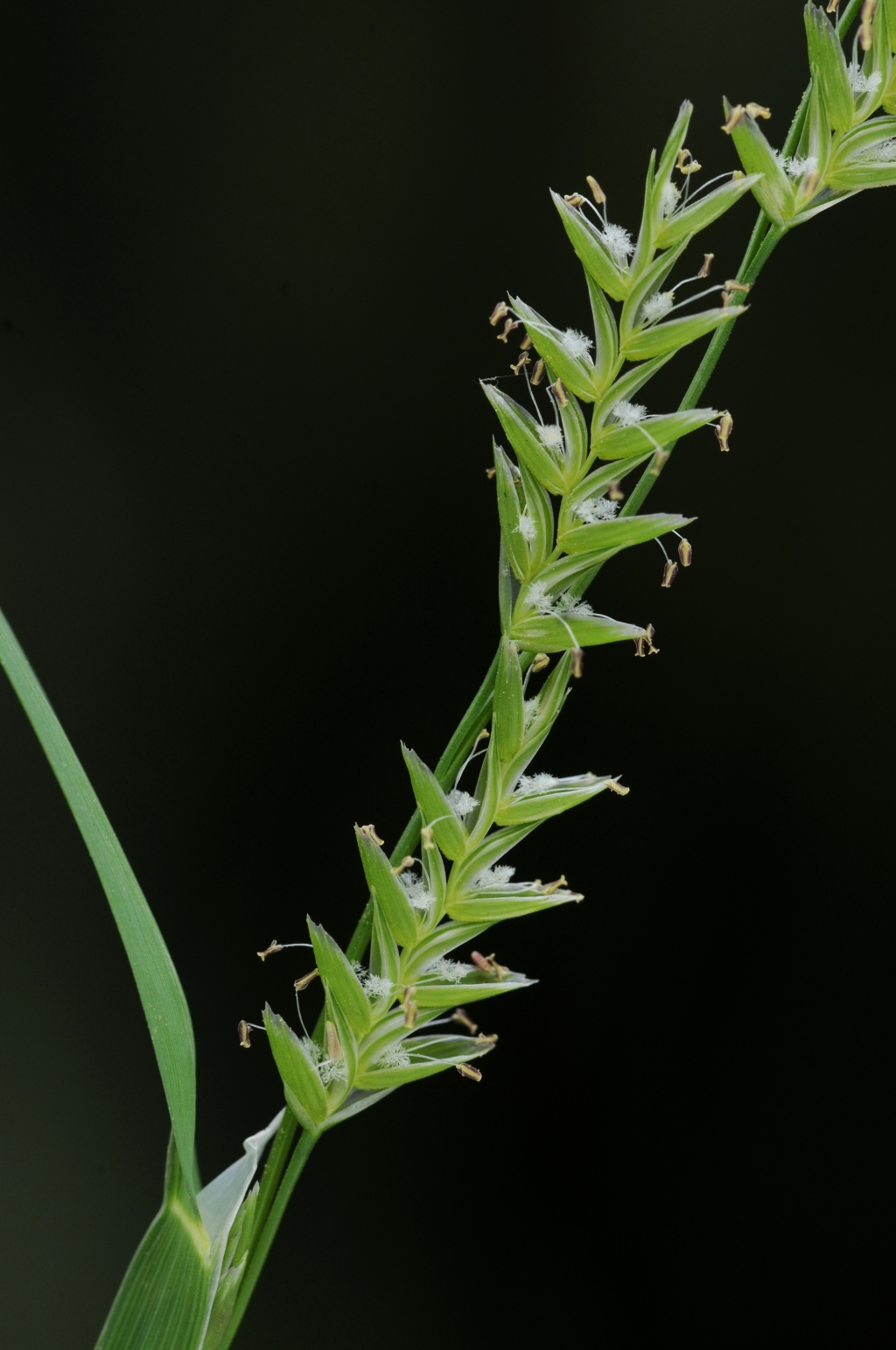Glyceria declinata
Bréb Manna grassLoosely tufted or rhizomatous perennial, culms ascending, to 80 cm high. Leaf-blades to 20 cm long and 10 mm wide, often glaucous, bluntish to broadly acute at apex; sheaths closed toward base, transverse veins indistinct or lacking; ligules 4–9 mm long, truncate, soon becoming shredded. Inflorescence a loose, slender panicle, often appearing one-sided, 4–40 cm long; spikelets 8–15-flowered, 13–25 mm long; lower glume 1.5–2.5 mm long, upper glume 0.5–1.5 mm longer than lower; lemma prominently 7-nerved, ovate, 4–5 mm long, firm, with 3–5 blunt, shallow teeth at apex; palea bifid, the two teeth shortly but distinctly exceeding lemma. Flowers Jan.–May.
GleP, VVP, VRiv, MuF, GipP, OtP, WaP, Gold, CVU, HSF, HNF, Strz, VAlp. Also naturalised in SA, NSW, Tas. Native to central and western Europe, North America. Occurs on sodden and seasonally inundated ground, particularly in roadside ditches in cooler, high-rainfall lowlands and in some irrigated areas in the north of the State.
Walsh, N.G. (1994). Poaceae. In: Walsh, N.G.; Entwisle, T.J., Flora of Victoria Vol. 2, Ferns and Allied Plants, Conifers and Monocotyledons, pp. 356–627. Inkata Press, Melbourne.
 Spinning
Spinning




